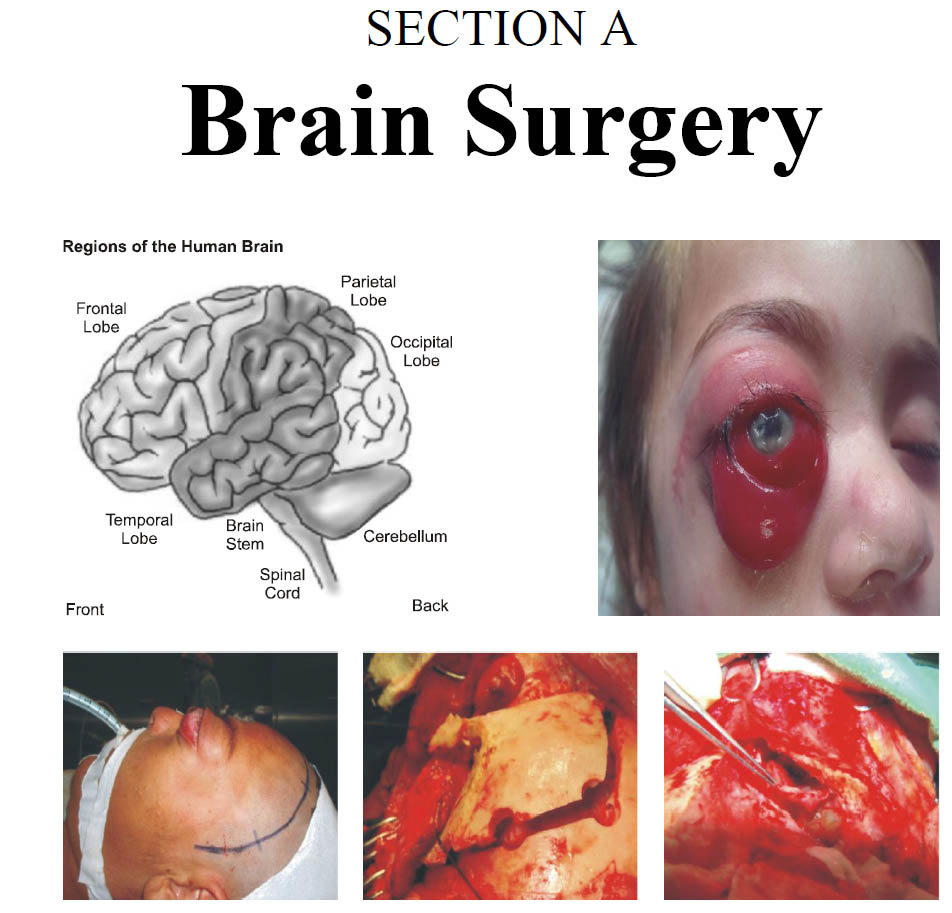Comparison of Outcome of Decompressive Craniectomy with Wide Dural Flap Duraplasty Versus Dural Slits in the Management of Post Traumatic Acute Subdural Hematoma in Terms of Postoperative CSF Leak
DOI:
https://doi.org/10.36552/pjns.v23i3.350Keywords:
Decompressive craniectomy, acute subdural hematoma, CSF leakAbstract
Objective: To compare the frequency of postoperative cerebrospinal fluid (CSF) leak after decompressive craniectomy with wide dural flap duraplasty versus dural slits in patients with post traumatic acute subdural hematoma.
Material and Methods: The study was conducted from August 2017 to February 2018 in the Department of Neurosurgery, PIMS, Islamabad. A total of ninety-two (n = 92) adult patients of either gender between age 15-55 years presented with isolated, unilateral traumatic acute sub dural hematoma (ASDH) with midline shift of 5mm were categorized into 2 groups; Group A (DC with open dural flap) and Group B (DC with dural slits). Patients were observed for CSF leakage for four weeks.
Results: Results showed that the overall frequency of CSF leak was not significantly different in both groups and revealed that the CSF leak was observed in 10.9% (n = 5/46) in group A (DC plus open dural flap) and in 21.7% (n = 10/46) in group B (DC plus dural slits) (P = 0.158). The difference was not significant in terms of frequency of CSF leak in both groups when results were stratified with respect to gender, age, duration of trauma and baseline GCS. P value (chi-square) was found to be > 0.05 in all cases.
Conclusions: The postoperative CSF leak was observed in higher percentages in patients who underwent DC with dural slits as compared to the patients who underwent DC with open dural flaps for surgical management of ASDH. The difference, however, was not statistically significant.
References
2. Leitgeb J, Mauritz W, Brazinova A, Janciak I, Majdan M, Wilbacher I, et al. Outcome after severe brain trauma due to acute subdural hematoma. J Neurosurg. 2012; 117 (2): 324-33.
3. Mulligan P, Raore B, Liu S, Olson JJ. Neurological and functional outcomes of subdural hematoma evacuation in patients over 70 years of age. J Neurosci Rural Pract. 2013; 4 (3): 250-6.
4. Karibe H, Hayashi T, Hirano T, Kameyama M, Nakagawa A, Tominaga T. Surgical Management of Traumatic Acute Subdural Hematoma in Adults: A Review. Neurologia medico-chirurgica. 2014; advpub.
5. Rush B, Rousseau J, Sekhon MS, Griesdale DE. Craniotomy versus craniectomy for acute traumatic subdural hematoma in the United States: A national retrospective cohort analysis. World neurosurgery, 2016; 88: 25-31.
6. Kwon YS, Yang KH, Lee YH. Craniotomy or decompressive craniectomy for acute subdural hematomas: surgical selection and clinical outcome. Korean journal of neurotrauma, 2016; 12 (1): 22-7.
7. Bhat AR, Kirmani AR, Wani MA. Decompressive craniectomy with multi-dural stabs–a combined (SKIMS) technique to evacuate acute subdural hematoma with underlying severe traumatic brain edema. Asian journal of neurosurgery, 2013; 8 (1): 15.
8. Khan B, Afridi EAK, Khan B, Khan SA, Aurangzeb A, Khan AA, et al. Decompressive Craniectomy For Acute Subdural Haematoma With Expansile Duraplasty Versus Dural-Slits. Journal of Ayub Medical College Abbottabad, 2016; 28 (2): 285-8.
9. Sakushima K, Hayashino Y, Kawaguchi T, Jackson JL, Fukuhara S. Diagnostic accuracy of cerebrospinal fluid lactate for differentiating bacterial meningitis from aseptic meningitis: a meta-analysis. Journal of Infection, 2011; 62 (4): 255-62.
10. Beck J, Gralla J, Fung C, Ulrich CT, Schucht P, Fichtner J, et al. Spinal cerebrospinal fluid leak as the cause of chronic subdural hematomas in nongeriatric patients. Journal of neurosurgery, 2014; 121 (6): 1380-7.
11. Bhat AR, Wani MA, Kirmani AR, Raina T, Arif S, Ramzan A. Dural-stabs after wide craniectomy to decompress acute subdural hematoma with severe traumatic brain edema-An alternative technique to open dural flap. Indian Journal of Neurotrauma, 2010; 7 (01): 29-35.
12. Ezri T, Abouleish E, Lee C, Evron S. Intracranial subdural hematoma following dural puncture in a parturient with HELLP syndrome. Canadian Journal of Anesthesia, 2002; 49 (8): 820-3.
13. Barthelemy EJ, Melis M, Gordon E, Ullman JS, Germano IM. Decompressive Craniectomy for Severe Traumatic Brain Injury: A Systematic Review. World Neurosurg. 2016; 88: 411-20.
14. Gelabert-Gonzalez M, Iglesias-Pais M, Fernández-Villa J. Acute subdural haematoma due to ruptured intracranial aneurysms. Neurosurgical review, 2004; 27 (4): 259-62.
15. Koerbel A, Ernemann U, Freudenstein D. Acute subdural haematoma without subarachnoid haemorrhage caused by rupture of an internal carotid artery bifurcation aneurysm: case report and review of literature. The British journal of radiology, 2005; 78 (931): 646-50.
16. Utsunomiya A, Narita N. Spontaneous occipital subdural haematoma. Journal of Neurology, Neurosurgery & Psychiatry, 2001; 71 (1): 127-.

Downloads
Published
Issue
Section
License
The work published by PJNS is licensed under a Creative Commons Attribution-NonCommercial 4.0 International (CC BY-NC 4.0). Copyrights on any open access article published by Pakistan Journal of Neurological Surgery are retained by the author(s).












